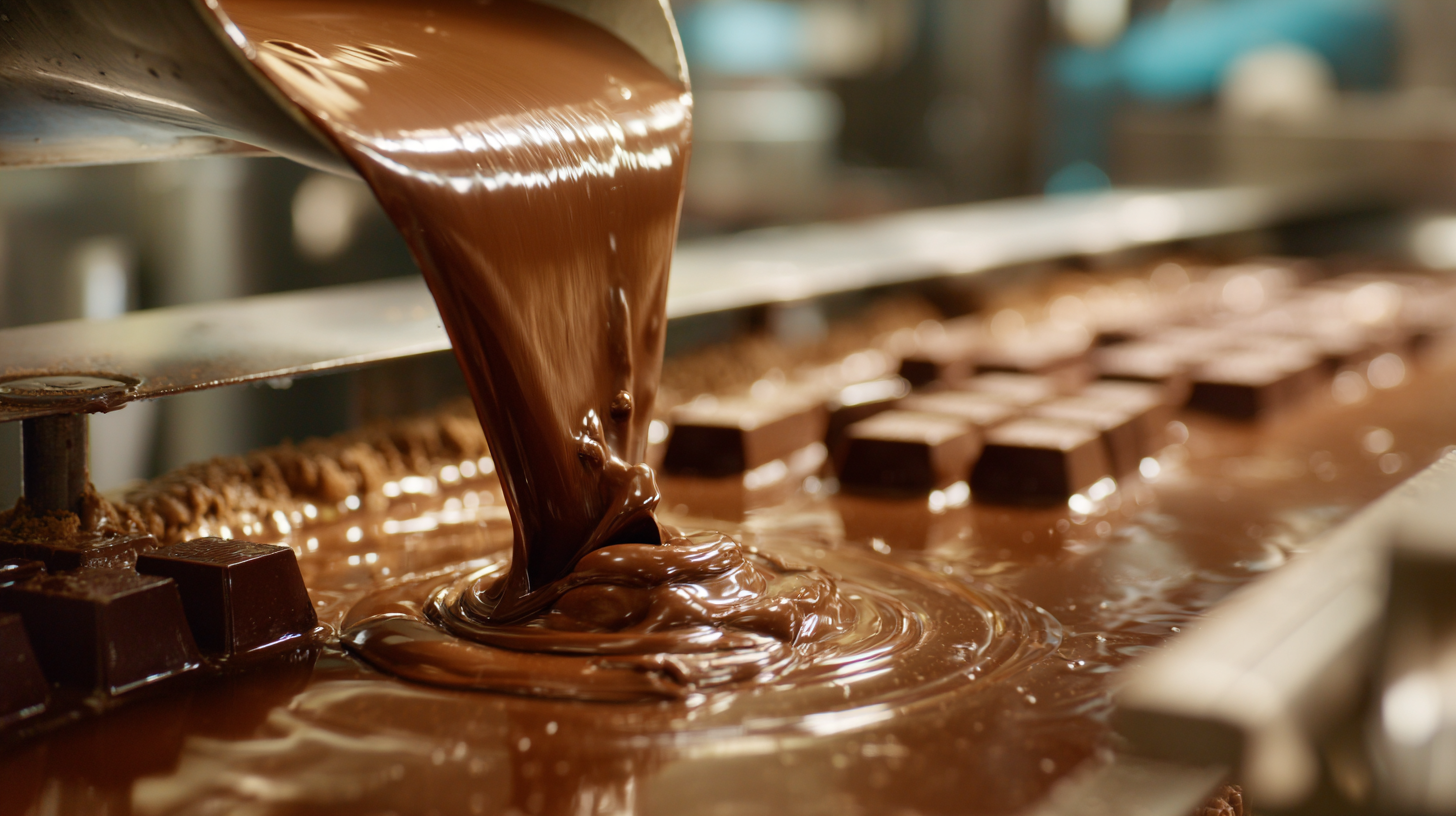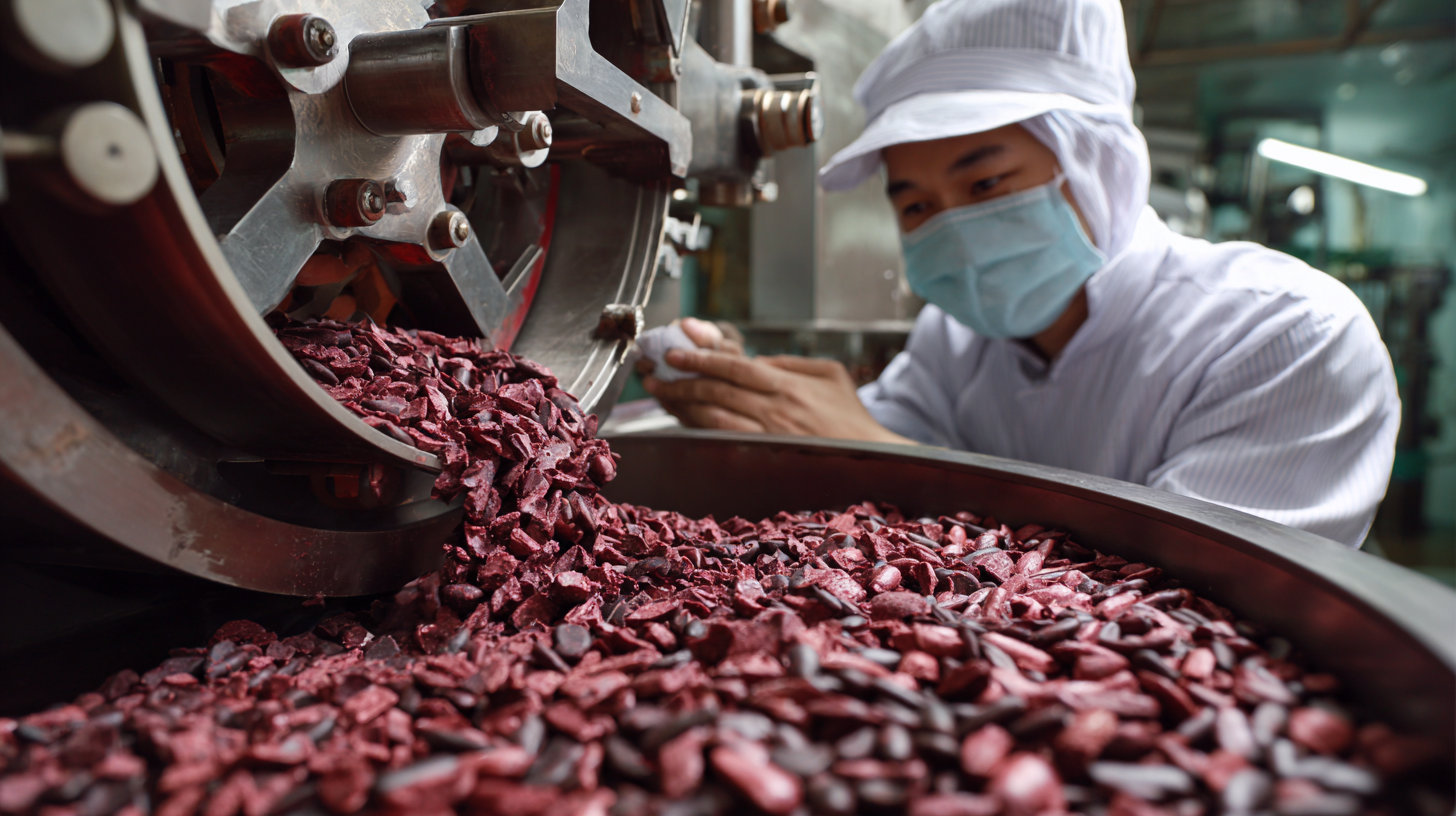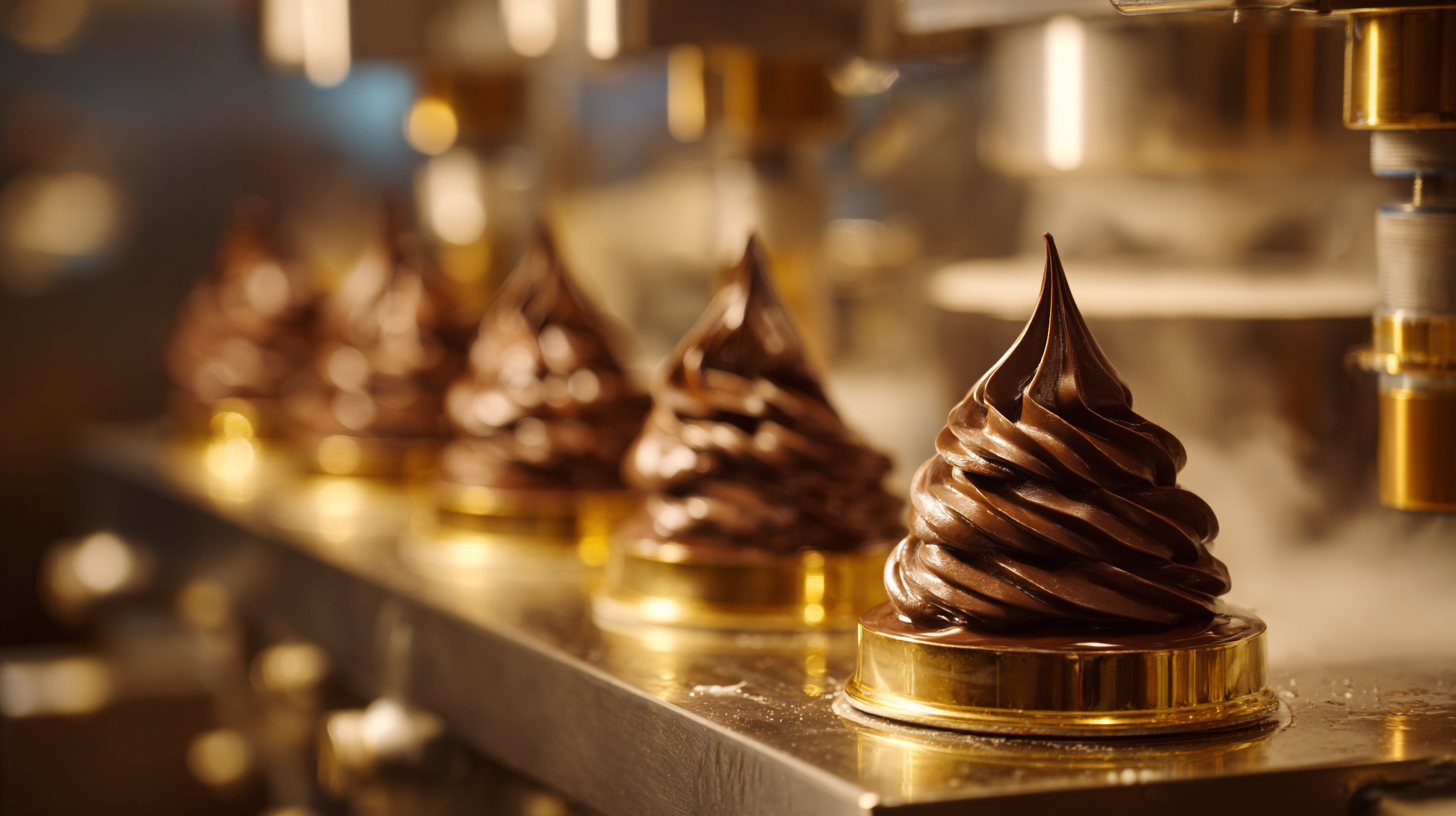As the global chocolate market continues to expand, with reports predicting a market value of over $183 billion by 2024, the demand for innovative decorative solutions is more pressing than ever. In this context, "Macchine decorative per il cioccolato" are becoming essential for manufacturers looking to differentiate their products and increase consumer appeal. The trend toward artisanal and aesthetically pleasing chocolates reflects a growing consumer preference for visually striking confectioneries, pushing brands to invest in state-of-the-art decorative machine solutions.

According to recent industry studies, companies that leverage advanced technologies in their production processes can see a significant boost in sales, with decorative elements often serving as key drivers of customer engagement and purchase decisions. This blog will explore seven unmatched machine solutions that can elevate the decorative chocolate production process, bringing creativity and efficiency to the forefront of chocolaterie operations.
In the world of confectionery, the demand for precision in decorative chocolate molding has surged, leading to innovative machinery solutions that redefine production standards. According to a recent report by Grand View Research, the global chocolate market is expected to reach $202.3 billion by 2027, underscoring the importance of high-quality manufacturing processes. Advanced machinery designed for decorative chocolate production not only enhances aesthetic appeal but also ensures consistency in shape and quality, critical factors in maintaining consumer satisfaction.
For manufacturers looking to invest in this niche market, prioritizing machinery that integrates cutting-edge technology is key. Many new machines offer digital controls, allowing for the fine-tuning of temperature and mold designs, which are essential for achieving precision. As noted by a report from Mordor Intelligence, the rise of automated systems in food production is projected to grow at a CAGR of 7.5% from 2021 to 2026. Thus, adopting automated chocolate molding solutions can significantly enhance productivity while minimizing labor costs.
Tip: When considering machinery for decorative chocolate production, opt for models that allow for easy mold changes. This flexibility enables quick adaptations to market trends and seasonal demands, ensuring your products remain fresh and appealing. Additionally, investing in machines that support eco-friendly practices can not only attract environmentally-conscious consumers but also improve your brand's overall sustainability profile.

Automation technologies are revolutionizing the decorative chocolate production landscape, significantly enhancing efficiency and product quality. With the rise of robotics in the confectionery sector, manufacturers are now able to streamline operations, reduce waste, and improve precision in the creation of intricate chocolate designs. Recent narratives highlight that the integration of robotics can lead to around a 20-30% increase in productivity, paving the way for more innovative and customizable products.
Moreover, advancements like 3D printing are becoming increasingly relevant in chocolate production, offering the ability to craft unique shapes and structures that were previously unimaginable. This additive manufacturing process allows for the layering of edible materials to create diverse and personalized chocolate items. Studies indicate that this technology can reduce production times significantly, offering a remarkable alternative to traditional methods. As the industry embraces the fourth industrial revolution, the potential for automation to unlock new creative avenues in decorative chocolate is undeniably exciting.

In the evolving realm of chocolate production, achieving the perfect texture and finish has become paramount for manufacturers aiming to captivate discerning consumers. Recent industry reports indicate that nearly 70% of consumers prioritize both appearance and mouthfeel when selecting chocolate products, underscoring the importance of high-quality production equipment. Investing in cutting-edge machinery not only enhances the visual allure of decorative chocolates but also optimizes the sensory experience that influences purchasing decisions.
One innovative solution lies in the integration of automated tempering machines, which ensure consistent tempering processes that are crucial for attaining that desired glossy finish. According to a report from the International Cocoa Organization, chocolates with superior textural attributes can result in a 30% increase in market share compared to their less refined counterparts. Additionally, modern enrobing systems equipped with precision controls can significantly reduce production time while maintaining the integrity of the chocolate, allowing for quicker turnaround times in a highly competitive market. Embracing these advancements not only elevates product quality but also fosters brand loyalty among consumers in a landscape where differentiating factors are increasingly critical.
| Machine Type | Key Feature | Benefits | Production Capacity (kg/hr) | Energy Consumption (kWh) |
|---|---|---|---|---|
| Tempering Machine | Precision Temperature Control | Improved sheen and snap | 300 | 5 |
| Chocolate Molding Machine | Automated Filling System | Consistent shapes and sizes | 400 | 7 |
| Cooling Tunnel | Forced Air Circulation | Rapid cooling for better quality | 500 | 10 |
| Enrobing Machine | Dual Chocolate Coating | Enhanced flavor profiles | 200 | 6 |
| Decorating Machine | Customizable Patterns | Unique designs for branding | 150 | 4 |
| Conching Machine | Continuous Processing | Smooth texture and taste | 250 | 8 |
| Powder Coating Machine | Advanced Dusting System | Improved texture and appearance | 100 | 3 |
The world of chocolate production is transforming with the integration of innovative artistic design software, revolutionizing the way decorators can create visually stunning confections. These tools empower chocolatiers to push the boundaries of creativity, enabling them to design intricate patterns and vibrant colors with unprecedented precision. By leveraging advanced algorithms and user-friendly interfaces, the software allows for the generation of customizable templates, ensuring that each piece of chocolate is not only a treat for the taste buds but also a feast for the eyes.
Moreover, the use of artistic design software streamlines the chocolate decoration process, significantly enhancing efficiency. With the capability to simulate designs before actual production, chocolatiers can experiment and refine their creations in a virtual space. This not only reduces material waste but also accelerates the overall workflow, making it easier for artisans to produce high-quality chocolates that meet the demands of a competitive market. As these technological advances continue to evolve, chocolatiers are well-equipped to transform their artistic visions into reality, setting new standards for chocolate decoration.
Sustainable practices in decorative chocolate manufacturing are gaining momentum, as brands shift towards eco-friendly production methods to meet the demands of conscious consumers. Recent studies indicate that a significant percentage of consumers are increasingly aware of the environmental impact of their food choices, with 58% making purchasing decisions based on sustainability. This shift has prompted the industry to explore innovative approaches, like using ethically sourced cocoa and reducing carbon footprints in manufacturing processes.
Implementing sustainable practices not only appeals to consumers but can also enhance a brand's reputation. Companies are now investing in advanced technologies, including sustainable robotics, which can improve efficiency while minimizing waste. Reports suggest that incorporating automated systems can reduce labor costs by up to 20% and improve production accuracy, further supporting sustainable operations.
Tip: When adopting sustainable practices, consider collaborating with local farmers to source ingredients, which can also boost community engagement. Additionally, exploring energy-efficient machinery can significantly lower operational costs while promoting environmental responsibility. Aim for transparency in your supply chain to build trust with your consumers, as they are more likely to support brands that prioritize ethical practices.
Utilizziamo i cookie per migliorare l'esperienza utente. Per maggiori informazioni, consulta la nostra Cookie Policy.